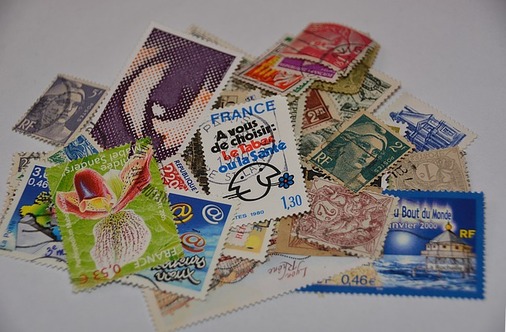
Collectibles are a rich source of emotional meaning, representing memories, passions, and our true selves. But when the unpredictability of water damage threatens these treasured objects, panic and anxiety set in. This all-inclusive guide is meant to be your compass through the storm, providing not only useful advice but also a sincere comprehension of the emotional weight these collectibles carry.
From identifying susceptible items to putting careful drying and restoration techniques into practice, we will reveal the art of saving your treasures from the clutches of water damage in the pages that follow. Each section represents a chapter in the journey of salvation, where strategy and dedication come together to protect the memories and stories that are ingrained in your cherished collectibles.
When we dive into the core of this guide, picture a road map for rescuing your most treasured items, be they fragile artwork, antique rugs, or electronic memorabilia. Water damage can happen without warning, but with the right information and a proactive strategy, you can lessen its effects and come out on top when it comes to protecting your priceless collectibles.
Come along for the ride as we embark on a journey of resilience that will address the emotional significance of these treasures as well as the technical aspects of salvaging items. Together, we will work through the many steps involved in restoring collectibles from water damage so that the stories contained within each piece stand the test of time.
See also our post on How to Deal with Water Damage in a Commercial Kitchen
How to Identify Vulnerable Collectibles
Porous Materials
Objects made from porous materials like paper, cardboard, or textiles are particularly susceptible to water damage. Books, comics, and vintage textiles fall into this category.
Delicate Artwork
Art pieces, especially those with water-soluble pigments, are prone to distortion and color bleeding when exposed to water. Watercolor paintings, prints, and delicate drawings require special attention.
Wooden Treasures
Wooden collectibles, such as antique furniture, sculptures, or intricate carvings, can warp or rot when soaked. Rapid action is crucial to preserving their integrity.
Sensitive Electronics
Modern collectibles like gaming consoles, vintage cameras, or electronic memorabilia may suffer irreparable damage if exposed to water. Quick and careful handling is necessary to prevent electrical issues.
Fragile Memorabilia
Delicate items like vinyl records, photographs, and memorabilia made from fragile materials need gentle care during water damage incidents. These items often carry sentimental value, making their preservation even more crucial.
Immediate Damage Control Measures
Remove from Water Source
Swiftly remove collectibles from the water source to prevent further soaking. The longer items remain submerged, the more severe the damage becomes.
Prioritize Delicate Items
Focus on rescuing the most delicate and vulnerable items first. Delicate artwork, papers, and sensitive electronics should be prioritized for immediate attention.
Minimize Handling
Handle wet collectibles with care to avoid additional damage. Excessive handling of waterlogged items can lead to further deterioration, especially for delicate or fragile materials.
Separate Items
Separate wet items to prevent them from sticking together. This is particularly important for paper-based collectibles, where adhesion can result in irreparable damage.
Use Clean Hands or Gloves
Wear clean, dry gloves when handling collectibles to minimize the transfer of oils and dirt from your hands. Clean hands or gloves help preserve the items during the salvage process.
See also our post on How to Choose a Water Damage Restoration Company
Drying Techniques for Different Collectibles
Air Drying for Paper-Based Items
Lay paper-based collectibles flat on absorbent surfaces to air dry. Avoid exposing them to direct sunlight, which can cause further damage. Gently blot excess water with clean, dry towels.
Freeze Drying for Books and Documents
For water-damaged books and documents, consider freeze-drying to prevent pages from sticking together. Place items in a plastic bag and freeze them until professional assistance is available.
Dehumidification for Wooden Items
Use dehumidifiers in the affected area to remove excess moisture. For wooden collectibles, such as furniture or carvings, control humidity to prevent warping and rot.
Silica Gel Packs for Electronics
Place water-damaged electronic collectibles in a bag with silica gel packs. Silica gel helps absorb moisture and facilitates the drying process. Ensure the items are completely dry before attempting to use them.
Air Circulation for Textiles
Hang water-damaged textiles in a well-ventilated area to encourage air circulation. Avoid using heat sources, as they may cause shrinking. Regularly change the position of the textiles for uniform drying.
Cleaning and Restoration Techniques
Gentle Wiping for Delicate Surfaces
Use a soft, clean cloth to gently wipe delicate surfaces, removing excess moisture and preventing water stains. Take extra care with items that have intricate details or fragile finishes.
Mild Soap Solutions for Textiles
For water-damaged textiles, create a mild soap solution using a gentle detergent. Test in an inconspicuous area first to ensure it doesn’t cause discoloration. Gently dab the solution onto the affected areas.
Professional Art Restoration
For valuable artwork, consider professional restoration services. Art restorers possess the expertise to repair water damage, ensuring the preservation of both aesthetic and monetary value.
Wood Polish and Sealants
Apply wood polish and sealants to wooden collectibles after they have thoroughly dried. This helps restore the original finish and provides a protective layer against future water damage.
Electronic Inspection
Before attempting to use water-damaged electronics, consult with a professional technician. Disassemble and inspect internal components for any signs of moisture. Allow electronics to dry completely before testing.
Preventive Measures for Future Protection
Climate Control
Maintain a stable indoor climate to prevent humidity fluctuations. Invest in climate control systems to regulate temperature and humidity levels, safeguarding collectibles from potential water damage.
Elevated Storage
Store collectibles on elevated surfaces to minimize the risk of water exposure. Avoid placing items directly on the floor, especially in areas prone to flooding.
Protective Casings
Utilize protective casings for electronic collectibles and delicate items. Waterproof containers or display cases can provide an additional layer of defense against potential water damage.
Regular Inspections
Conduct regular inspections of storage areas and display spaces. Look for signs of leaks or water infiltration to catch potential issues before they escalate.
Insurance Coverage
Review and update insurance coverage to ensure it adequately protects your valuable collectibles. Understand the terms of your policy and consider additional coverage for specific items.
Tips for Seeking Professional Assistance
Art Conservators
Engage the services of art conservators for valuable and delicate artwork. These professionals specialize in preserving and restoring artworks to their original condition.
Restoration Experts
For complex restoration projects, consult with restoration experts specializing in different types of collectibles. Their expertise can be invaluable in salvaging items with significant sentimental or monetary value.
Electronic Technicians
When dealing with water-damaged electronics, seek the expertise of electronic technicians. They can assess the extent of damage and provide guidance on restoration or repairs.
Antique Furniture Restorers
For water-damaged wooden collectibles, especially antique furniture, consult with antique furniture restorers. Their knowledge of wood restoration techniques can help salvage these cherished pieces.
Document Preservation Services
In the case of water-damaged documents or books, consider document preservation services. These professionals have the tools and techniques to restore delicate paper-based items.
Tips for Emotional Restoration and Moving Forward
Acknowledging Losses
Acknowledge any losses that may have occurred. Understand that, despite efforts to save every item, some may be irreversibly damaged. Allow yourself the space to grieve these losses.
Celebrating Successes
Celebrate the successes in preserving and restoring your collectibles. Recognize the effort and care invested in salvaging these cherished items, regardless of their monetary value.
Learning from the Experience
Reflect on the experience of saving collectibles from water damage. Identify lessons learned and consider how to enhance future preventive measures and response strategies.
Sharing Knowledge
Share your knowledge and experiences with others facing similar challenges. Collective wisdom can foster a supportive community dedicated to preserving cherished possessions.
Moving Forward with Resilience
Moving forward, approach the future with resilience. Embrace the restored and salvaged items as symbols of triumph over adversity. Let this experience fortify your commitment to protecting your collectibles and creating a resilient environment for them.
See also our post on Professional Water Damage Restoration Services, West Lake Hill, TX
Conclusion
Every action counts when saving collectibles from water damage; this guide aims to provide you with a thorough understanding of how to navigate the challenges of water damage and save your treasured possessions, not just strategies.
The process is one of care and dedication, from identifying fragile items to carrying out methodical drying and restoration procedures. As you set out on this path, may your efforts to preserve these collectibles be rewarded with success, enabling the histories enshrined in each piece to live on for future generations.





